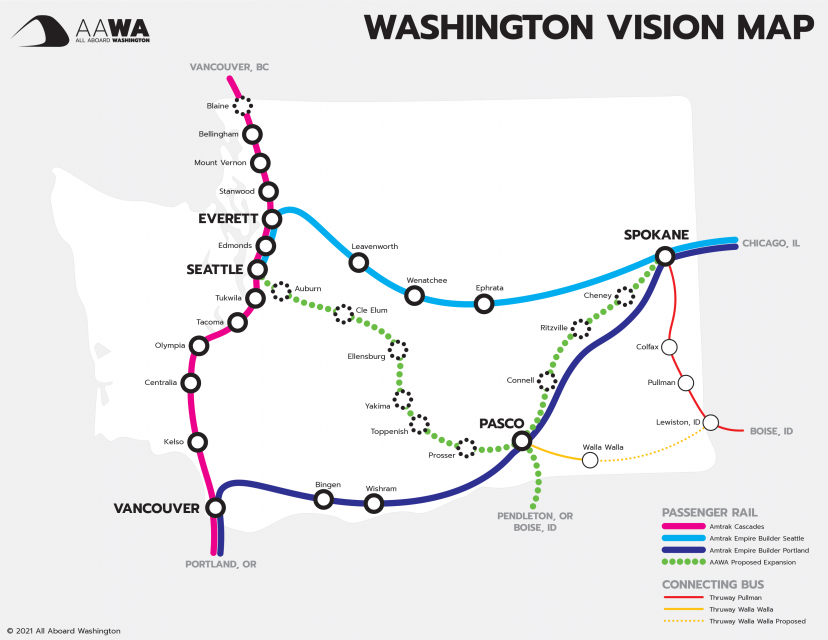Vision
Vision Statement
Our vision is for a transportation network that
- Provides seamless, door-to-door connectivity to everyone in the region; and
- Offers economic, environmental and equity benefits to all, including low-income, tribal, disability and rural communities, locations where transportation alternatives are limited, and those who cannot drive
We must build a transportation network that will allow anyone to get from their homes to where they need to go – work, school, medical care, family and friends – even if they don’t use a car. Non-drivers are a large and increasing fraction of the population, including the young, the old, the disabled, the poor, and those who are concerned about the planet’s future.
We must join together with a coalition of environmental, economic development, equity, labor, and health organizations, and those representing rail, port, transit and other transportation modes to amplify our voices. No one will get exactly what we want, but we must take advantage of the unique circumstances we see today.
Our Vision for Improving Rail in Washington
AAWA's vision is for a robust, interconnected transportation network, including improved train service, more frequencies on current Cascades service, new connections between Western, Central and Eastern Washington, and connections to local transportation.
We believe an expansive network of useful intercity passenger rail services is key to improving travel safety, increasing accessibility, facilitating economic stability, making the most of our limited financial resources, and reducing the environmental burden of transportation in the Northwest. In order to maximize the benefits of our rail network, we believe it is imperative that we:
Maintain and Upgrade Existing Rail Infrastructure
Plenty of existing, underused freight rail infrastructure is spread across the Northwest and can be restored or upgraded to accommodate passenger use. AAWA supports utilizing existing rail rights of way to create a comprehensive system of local, regional, and interstate train routes that serve communities small and large. We are especially supportive of improvements that foster the creation of Emerging High-Speed Rail (EHSR). EHSR allows existing passenger train equipment to be operated at top speeds that exceed conventional limits, but without the same infrastructure needs and freight train exclusion required for full HSR. Maximizing the utility of our current rail infrastructure will help us be prepared for HSR, which can serve as a faster, greener alternative to short-haul flights when integrated effectively with local and regional connecting services.
Create a Multimodal Northwest Transportation Grid
While trains cannot reach every community on their own, rail lines act as spines from which other localized services can branch. AAWA encourages the agencies that interface with rail services to craft a multimodal transportation grid by creating and improving local connecting services. We strongly support improving the pedestrian, cycling, ferry, and local transit experience to make accessing train stations easy.
Provide High-Quality Amenities and Services
Travelers have higher expectations than ever, and passenger rail should rise to meet them. AAWA believes train stations and passenger cars should be equipped with the amenities needed to make them accessible, comfortable, and useful by modern standards. The latest scheduling, ticketing, and mapping technologies should be leveraged to make the entire experience seamless for every passenger. Offering reasonably frequent departures for every line will allow us to take advantage of economies of scale with track upgrades, station improvements, and equipment orders that give us a better bang-for-the-buck without compromising on utility.

